Like the Olympic games, the FIFA World Cup occurs every four years, and the nation responsible for hosting the event has to put in a ton of time, effort, and money to ensure that things go smoothly. Hosting nations typically spend hundreds of millions (if not billions) to prepare for it! But which FIFA World Cup was the most expensive?
The most expensive FIFA World Cup in history was the 2022 Qatar FIFA World Cup. Qatar spent $229 billion on the event. Up to $10 billion went toward building seven massive stadiums, but infrastructure and accommodation upgrades were also significantly costly.
Unlike tennis and polo, some of the most expensive sports in the world, soccer (or football if you live outside the United States) is an incredibly affordable team sport. So why do FIFA World Cup events end up costing so much?
Here Are the Top 5 Most Expensive FIFA World Cups in History:
- Qatar (2022) – $229 billion
- Brazil (2014) – $15 billion
- Russia (2018) – $14.2 billion
- Japan (2002) – $7 billion
- Germany (2006) – $4.9 billion
5. Germany (2006) – $4.9 Billion
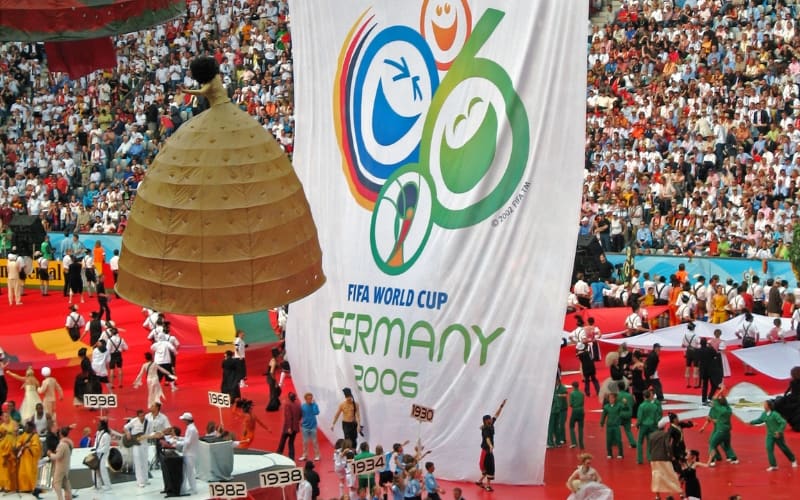
Like England, France, Argentina, and Brazil, Germany’s national soccer team is one of the most beloved in the world. So, when Germany hosted the 2006 FIFA World Cup, you can bet that hopes (and attendance) were high.
Of course, this particular World Cup wasn’t a cheap event. It cost the country $4.9 billion (roughly €3.7 billion). That said, it was also one of the most profitable FIFA World Cups of the last two decades.
The German government estimated that millions of spectators and visitors would arrive to celebrate the games, but that estimate was exceeded by about 15 million. That’s equivalent to the total population of two New York City’s just showing up unexpectedly!
Fortunately for Germany, their infrastructure and stadiums didn’t require a massive overhaul ahead of the 2006 FIFA World Cup. So while billions were spent on preparing the different host cities for incoming crowds, far less money was required to upgrade pre-existing structures and roadways.
In short, although Germany’s 2006 World Cup was quite expensive, the revenue it received from ticket sales and tourism balanced out the expenses and helped make the event quite profitable for the country. The same can’t be said for several other host countries.
For the price of this FIFA World Cup, you could afford to invest in the world’s most expensive diamonds! Of course, diamonds might not be quite as entertaining as watching the world’s most talented soccer teams compete to win everlasting athletic glory and international acclaim.
4. Japan (2002) – $7 Billion
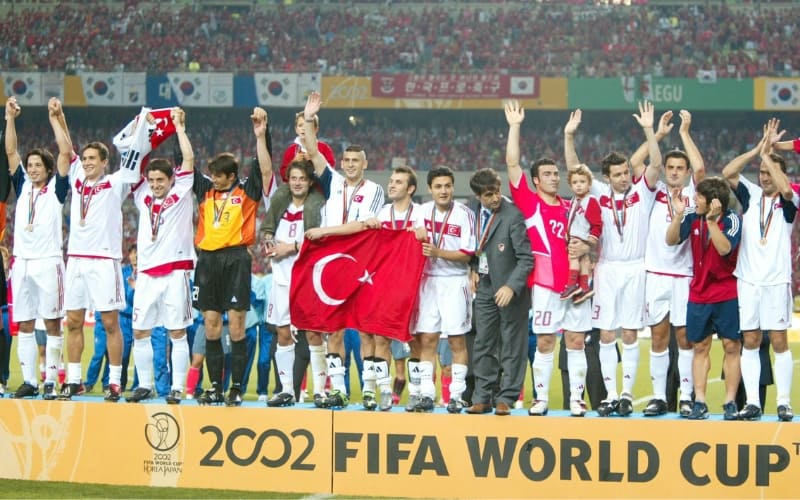
Japan is a comparatively small island nation, with most of its population centered in massive metropolitan areas. So, when this nation hosted the 2002 FIFA World Cup (alongside South Korea), one of its biggest challenges was finding room for the visiting spectators and athletes.
As you might imagine, finding a solution to this challenge was pretty costly, with Japan and South Korea spending about $7 billion in total to prepare for the event and accommodate guests.
The Japanese government built 20 professional-quality soccer stadiums to prepare for the 2002 World Cup. Those stadiums hosted the 64 matches that comprised the World Cup competition.
But revenue from the event fell short of expected levels, leaving the nation with a low ROI (return on investment).
As a result, some of the venues constructed for the 2002 World Cup are now in disrepair, as they’ve failed to draw the same number of spectators as the World Cup matches. After all, many of the stadiums are so large that they require millions of dollars in maintenance each year.
Still, the billions spent on the 2022 FIFA World Cup in Japan were dwarfed when the 2014 and 2018 events arrived.
3. Russia (2018) – $14.2 Billion
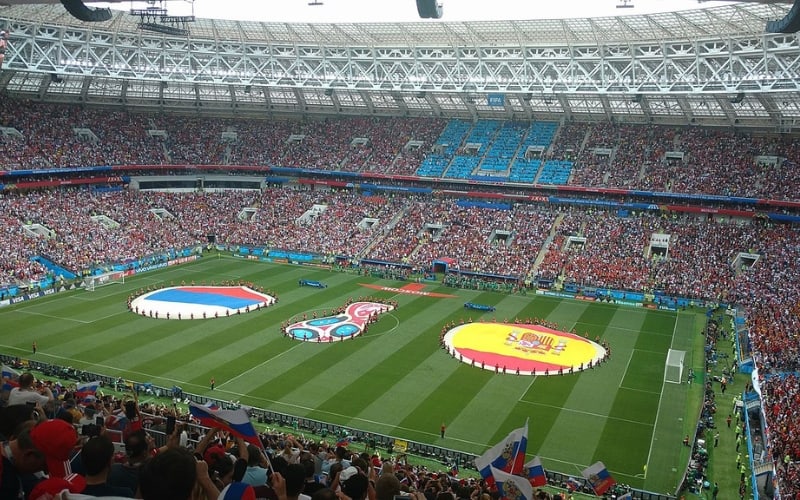
The 2018 FIFA World Cup was very nearly the most expensive FIFA World Cup in history, costing Russia an estimated $14.2 billion. This was several billion (about $3.2 billion) over the original estimated expense.
As with other costly World Cup events, much of this national expenditure went toward improving roadways (upgrading infrastructure) and renovating or building stadiums in preparation for the event.
After all, millions of spectators typically flock to FIFA World Cup host countries to watch matches live, and cities must be prepared for the sudden upswing in population, even though it’s temporary.
Here’s a quick breakdown of some of the expenses Russia footed to ensure that athletes and guests had a safe and enjoyable experience:
- $4.2 billion on renovating or building stadiums (a dozen in total)
- $8 billion on infrastructure (highways, public transport)
Naturally, these expenditures weren’t only beneficial for the 2018 World Cup. Many of them continue to benefit the Russian people today!
As a result, Russia experienced a comparatively high ROI, especially compared to other host nations. For example, nearly all the stadiums built to host the 2018 FIFA World Cup matches are still in use today. The same can’t be said for the stadiums Brazil built for the 2014 World Cup event.
If Russia had banked that $14.2 billion instead of spending it on the FIFA World Cup, it could have used those funds to buy all of the most expensive homes in Florida. But the value of that real estate can’t hold a candle to the pride of hosting the most anticipated sporting event outside of the Olympics.
2. Brazil (2014) – $15 Billion
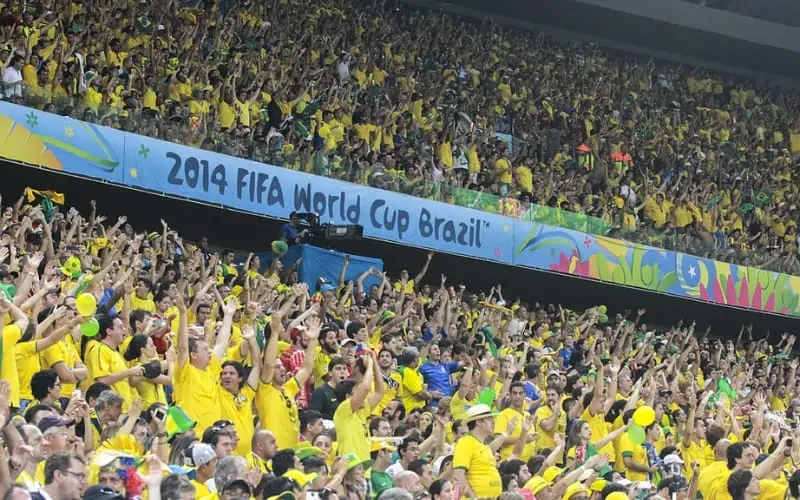
The 2014 FIFA World Cup in Brazil cost $15 billion, making it slightly more expensive (by less than $1 billion) than the 2018 competition. The FIFA organization gave Brazil $2 billion to assist with costs, meaning the country spent at least $13 billion (out of pocket) on the event.
The expenses roughly break down as such:
- $3.6 billion to construct stadiums
- $10.8 billion to renovate and prepare airports
- $900 million on security services to protect athletes and guests
FIFA returned $100 million in revenue from the 2014 World Cup to assist in Brazil’s national social programs, some of which help increase healthcare access to citizens.
Notably, Rio de Janeiro (one of the largest cities in Brazil) hosted the Olympic Games in 2016, less than two years after the World Cup. Consequently, the country saw a huge influx of visitors over a relatively short period, resulting in massive congestion and security problems worsened by lackluster infrastructure (highways and public transportation options).
Unfortunately, many construction projects planned for the 2014 FIFA World Cup were unfinished when the first teams arrived in Brazil. Despite that, FIFA managed to accrue a profit of $4 billion from this event.
Rushed Construction
Brazil’s government had to contend with multiple protests and slow building while preparing for the 2014 FIFA World Cup. As a result, several massive stadiums under renovation in preparation for the event remained unfinished (such as having incomplete roofing) when players and spectators arrived.
Several of the most expensive FIFA World Cup events have proven controversial, and many follow a similar pattern.
For example, Brazil rushed construction to prepare for the 2014 World Cup. Similarly, Qatar was still finishing construction projects just a few weeks (and potentially days) before the start of the 2022 World Cup.
In fact, many areas throughout Qatar that hosted visitors during the 2022 World Cup were bare deserts in 2010 when FIFA announced that Qatar would host the 2022 event.
1. Qatar (2022) – $229 Billion
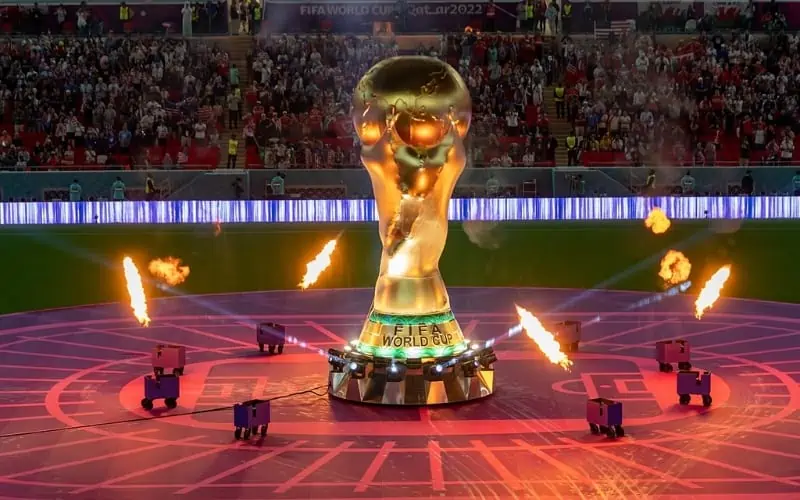
The most expensive FIFA World Cup in history is the Qatar FIFA World Cup of 2022. This event cost an estimated $229 billion, making it the costliest FIFA World Cup by more than $200 billion.
Qatar is one of the wealthiest countries in the world, so it isn’t necessarily surprising that it spent such a hefty sum on preparing for the 2022 event.
That said, it’s crucial to note that between 2010 (when FIFA announced that Qatar would host the 2022 World Cup) and 2022, Qatar almost completely transformed its infrastructure and transportation options in preparation for the competition.
It also built seven massive stadiums to host the matches and refurbished the single pre-existing one in Doha. This is in addition to numerous hotels, a new airport, and multiple highways.
Notably, the country also reputedly paid British soccer star David Beckham $277 million to act as their ambassador and get international audiences excited about the 2022 competition.
This nation even built a brand-new city, Lusail City, for the event. The stadium in this metropolitan area, Lusail Stadium, was designed and purpose-built to host the final match of the 2022 World Cup. In 2010, it was just a patch of sandy desert.
Qatar is the smallest country that has ever hosted the FIFA World Cup. Consequently, it had to spend big bucks to prepare itself for the potential influx of millions of international visitors.
But the rapid construction Qatar funded has sparked quite a lot of controversy.
Migrant Labor Controversy
Despite spending billions to ensure that players had professional-level stadiums to play in and guests had plenty of accommodation options from which to choose, much of the labor that contributed to these projects was outsourced to foreign workers.
These workers, many from India and Nepal, worked long hours in extreme conditions to finish construction on Qatar’s new stadiums, hotels, restaurants, and roadways. Many had to pay thousands of dollars to work on these projects, triggering concern from multiple international human rights organizations.
But the treatment of migrant workers isn’t the first controversy Qatar faced after FIFA announced the country would be hosting the 2022 World Cup.
Climate Concerns and Lackluster Attendance
When FIFA announced that Qatar would host the 2022 FIFA World Cup, many were surprised. After all, this event usually occurs in July. But daytime temperatures in Qatar during the summer can reach blistering highs of 112°F (44.4°C).
This high temperature would make it almost impossible for international players to play safely in exposed, open-air stadiums. It would also pose a threat to visitors, many of whom would be unaccustomed to such high temperatures. For this reason, the 2022 World Cup was rescheduled for November/December of 2022.
The climate of Qatar, coupled with outcry about the conditions of migrant workers in the country, may have contributed to the event’s initial lackluster attendance.
While officials estimated that about 1.2 million visitors would arrive during the first two weeks of matches, fewer than 770,000 showed up. All in all, Qatar might not end up recouping even a fraction of the costs spent to host the 2022 World Cup.
How Much Does the FIFA World Cup Cost?
Hosting the FIFA World Cup is a massive honor for any country, but it can also be jaw-droppingly expensive.
After all, the host country must provide enough professional-size stadiums to host matches, plenty of accommodation for players and fans, and many transportation options to ensure spectators can safely and efficiently travel to the stadiums.
Some of the FIFA World Cup funding comes directly from the International Federation of Association Football (FIFA). For example, FIFA gave Qatar about $1.7 billion to assist with preparation for the 2022 FIFA World Cup event.
But considering how many challenges Qatar had to overcome to prepare for the event, this funding was only a drop in the bucket.
Why Do FIFA World Cup Events Cost So Much?
Preparing to host a FIFA World Cup is no simple task. There are several factors to consider and plenty of issues to address, no matter which country is hosting the event.
Some of the priciest things that hosting nations have to contend with include:
- Infrastructure upgrades
- Prize money for the winning team
- Building stadiums
- Creating enough hotels for guests
- Broadcasting operations (televising the matches)
Consider this: Millions of people travel from around the world to watch the FIFA World Cup matches in person.
Additionally, hundreds (if not thousands) of journalists also attend to report on the matches. There are also 32 teams (for the finals), nearly all of which have associated personnel (managers, physical therapists).
Cities that are underdeveloped or already densely populated can struggle to handle the sudden influx of visitors, as everything from traffic to food consumption dramatically increases as the FIFA World Cup’s first matches get underway.
What Is the Most Expensive FIFA World Cup?
The most expensive FIFA World Cup is the 2022 Qatar FIFA World Cup. This event cost an estimated $229 billion, making it about 15 times more costly than the second-most expensive FIFA World Cup (Brazil 2014).
There are several reasons why the 2022 Qatar FIFA World Cup was so costly. Still, creating new stadiums and hotels (and completing significant infrastructure upgrades) were some of the biggest expenditures.
Check out these related articles to discover more about the world’s most expensive entertainment!

